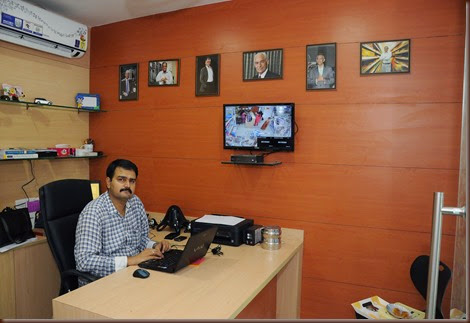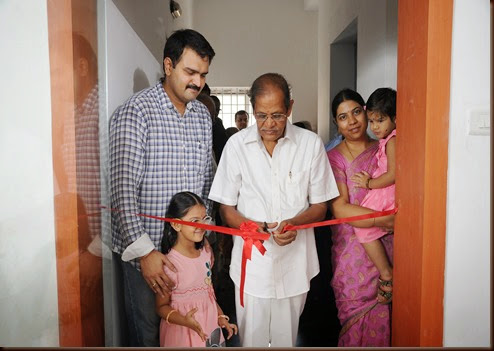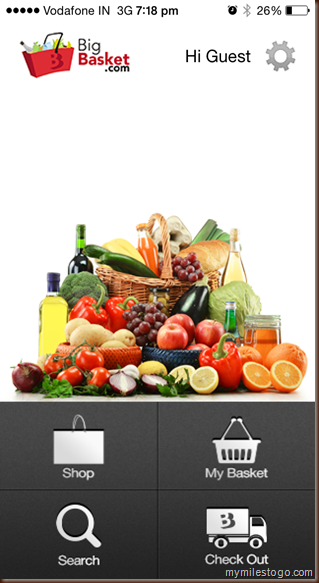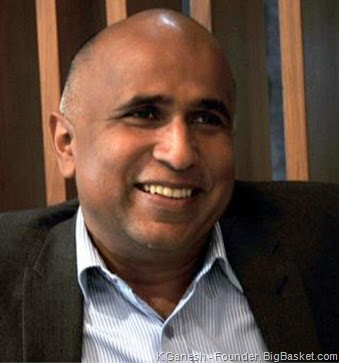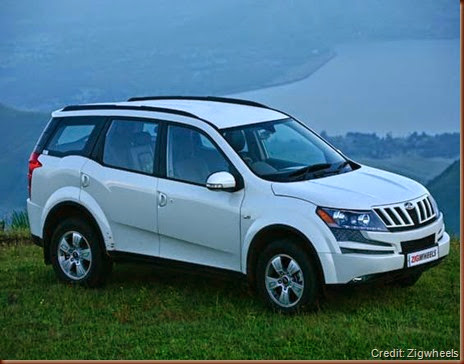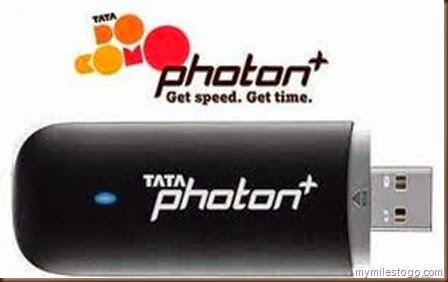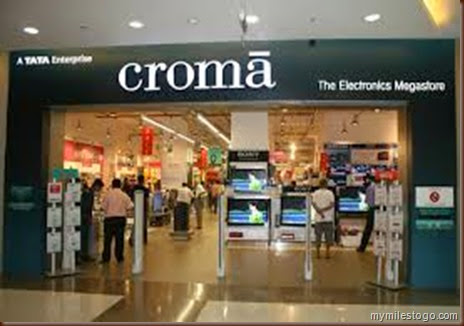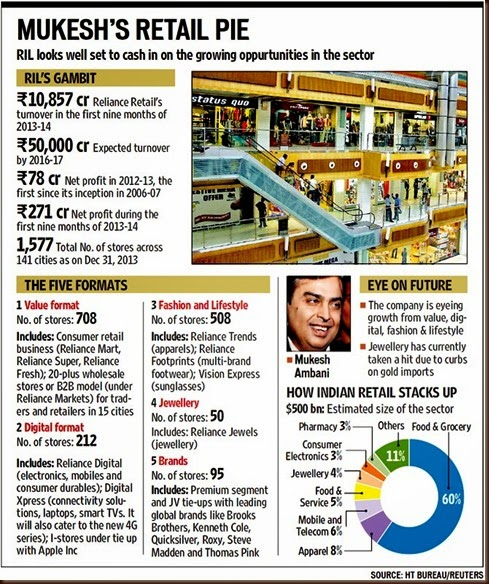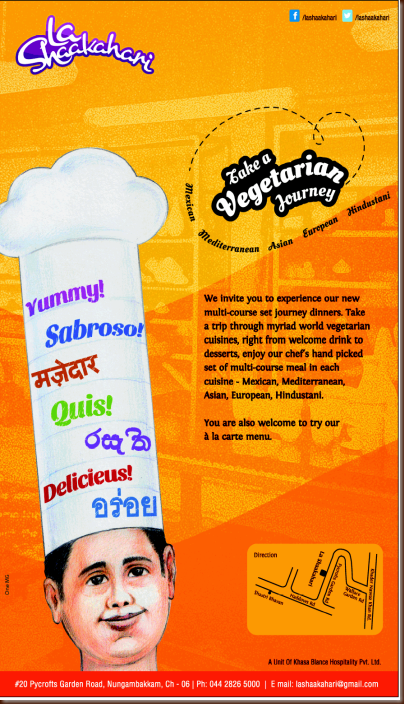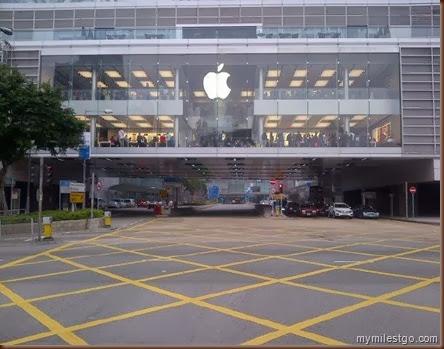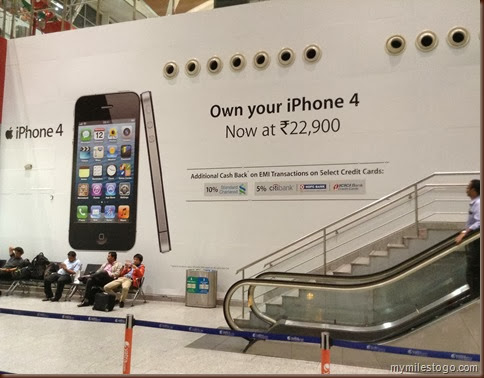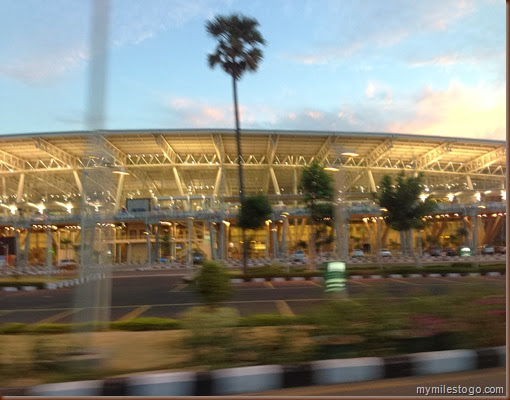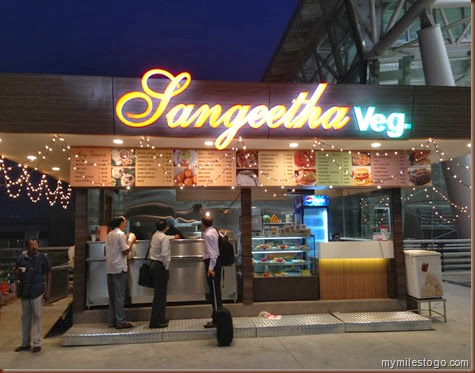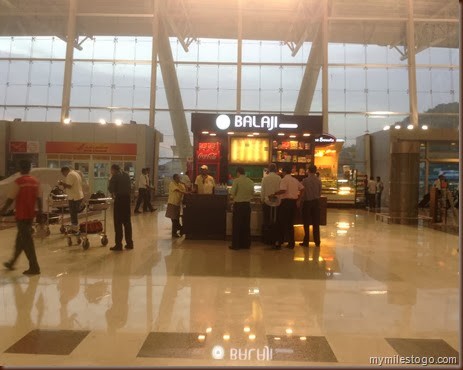05 May, 2017
Inventory Management
05 April, 2017
D for Delight - Customer Delight
01 February, 2015
180 Days as an Entrepreneur
I started my entrepreneurial journey exactly six months back from today, on 1st Aug. 2014. The journey has been nothing less than a roller coaster ride. I have always wanted to have a company for myself, but for that to happen in 2014 was based on various conditions at workplace and home. The last six months have been super exciting – everyday has been a revelation. I set foot by creating a retail business for myself, Smiling Baby which is a baby care venture that focuses on a wide range for products aimed at newborn children upto six years of age and catering to the aspirational middle class to shop in an affordable, comfortable and convenient environment. Confluence Retail Private Limited was established on an auspicious occasion – Teacher’s Day, which fell on 5th Sep. 2014. It was a great way of me dedicating my efforts to my teachers and Gurus, my mentors and well wishes and to everyone who have taught me a lesson or two in my personal, professional and public life.
We inaugurated the (physical) retail store on Friday, 26th Sep. 2014 and the venture is seeing good traction. We are currently taking the next big leap of taking the business to the web, but it wouldn’t be yet another E-Commerce store selling diapers and creams at deep discounts but something more engaging and interesting.
Here are some lessons that I learned as an Entrepreneur which I would like to share;
- Time Management – From waking up in the morning to hitting the sack late in the night, time is at our own disposal. What we do with it completely depends on what outcome we expect out of it.
- Results are directly linked to the efforts we put in. Well, its the same while we work somewhere else, but most probably we are working in large or small teams. But as an Entrepreneur, we are working for ourselves and most often alone, or in a short team.
- Blame ourselves when things go wrong; probably try to put the pieces together and find out what went wrong, where and why. No Blame Game – no one to pass on the buck - to juniors, seniors or peers.
- Money Management is key – as important as managing time. While most Entrepreneurs start off with a buffer of savings, what we fail to remember is to keep maintaining or building the buffer from time to time to help you stay longer in the game.
- Trusting those around – this has been a great challenge for me. While we work for large organizations, we believe people will do their job. But when you are on your own, it requires a lot more monitoring and follow-ups.
- Getting compliments from your first time and repeat customers – gives us a high but also makes us to be more and more modest.
Some of the pain points compared to a professional life;
- After being in the Corporate world for a decade and a half, we expect a certain level of professionalism at work, which doesn’t happen in most cases.
- People walk in at their will at your office and expect you to value their time, leaving behind what we have been working upon.
- There is no respect for appointments – in most cases, we are taken for granted since we don’t carry a business card of a popular company!
- Money is always scarce, especially if we are used to a certain lifestyle.
- Friends and Family look up to us differently – as though we are wasting time without pursuing a full time job.
Overall, its been one exciting journey, a very long in terms of knowledge yet a short one in time. I have learned a lot more things in the last six months than in the past six years or so, probably. Setting up your own company, especially in the Retail world which has its own complications from Finance to Supply Chain, Marketing to Operations.
The journey has just begun and I have Miles to Go before I sleep…
12 June, 2014
Online Grocery Shopping
There has been enough spoken and written about the Flipkart-Myntra deal. Online Commerce is no more a hype at the moment and there is no money to be made – that’s the response most subject matter experts are saying although they don’t want to be quoted since they are in various advisory capacities for many such companies. With a healthy two-digit margin, if offline Retailers are not able to succeed (read: profitable), then how would these companies survive- they ask. Having said that, there is not a single ECommerce company (in India) that has tasted profits yet. While many promoters have made millions of dollars collectively, the companies in question still remain unprofitable. I would presume that a very few of them would even be making unit level margins. Such is the discount structure and focus on Topline that these companies are almost forgetting that the main intention of a business is to create value through profitability and not just a valuation (to subsequent investors). Amongst the online frenzy across categories, the most dreaded and the most challenging category is grocery & daily needs including fruits and vegetables. Bangalore based BigBasket.com already has some headway while WeStaple.com from Noida and a few others who are regional players are taking the lead to establish their positions. Big Basket even has a Mobile app for Android and iOS from Apple. Take a look below at what their customers have to say;
https://www.facebook.com/Bigbasketcom
http://venkysundaram.wordpress.com/2013/05/29/why-i-stopped-using-bigbasket-com/
https://www.facebook.com/WEstaple
K Ganesh and his wife Meena Ganesh are an entrepreneur and angel investor-duo. BigBasket, which is run on a daily basis by the founders of e-tailer Fabmart, on the other hand, is one of India’s only online grocery stores. Online grocery stores have been seeing big traction around the world, as recurring orders prop up the profitability of the niche e-commerce category. “The Series B funding for BigBasket, which should close in the next three-to-four months, will be around $40- $50 million. We believe it has huge potential, with gross margins of nearly 20 per cent. Every order is profitable for us on BigBasket,” Mr. Ganesh told The Hindu.
Bigbasket founder Hari Menon, a successful entrepreneur who sold his brick-and-mortar retail chain Fabmall and Trinetra to Aditya Birla Group, is bullish. “It’s a huge, underserved market. Convenience is a major factor in our metros. We are finding that at least 85% of our customers return after the second order.” Menon said that revenue is increasing 20% each month. Bigbasket delivers 4,000 orders daily. In Mumbai, where the average size of an order is Rs1800, it does 800 deliveries each day. The site has served 200,000 customers so far and is expanding to Delhi and its suburbs. Menon said the company did Rs85 crore ($14.3 million) in revenue in 2013-14 and was on course to do Rs200 crore ($33.7 million) in sales this fiscal year.
While the category is exciting, most customers seem to expect the savings (on real estate) to be passed on to them, which in reality is not. If the Real Estate savings are about 10-12% on Sales, the promotions and marketing costs are much larger than that, especially the first-time acquisition cost of customers. While most players do not offer much of discounts for every item, there are chances of combined savings when you buy more quantities or multiple brands from the same company.
However, the overall sentiment seems to be simple- customers would buy products online only if they value their time more than the time spent in shopping offline at Retail Stores such as Spencers, Foodworld, Nilgiris, Big Bazaar, etc. India has a huge density of Kirana Stores while Organized Retailers in the big cities are already quite popular for more than a decade now. Fruits and Vegetables are still preferred to be bought from the vendors who sell fresh quality items, most of them directly sourced from the Markets. Retail FDI in multi-brand retailing is a contentious issue and even the new Modi-led Government is not actively pursuing this at the moment, for the benefit of the trader community who form a big chunk of vote bank.
Online Grocery, at the moment is restricted only to those who work in odd-times, say BPO Employees and many others who would find it difficult to shop at a nearby store especially those who live in far off suburbs. Having said that, the Kiranas are much more active these days, offering various facilities such as door delivery to credit facilities to their customers. While Online Grocery has a great future, time will be a real reckoner.
25 May, 2014
Embarrassing Customer Moments
What customers rue most about is when a predictable customer service goes awry. Especially, if one has been pampered all the while for quite some time by the same team probably and that one negative experience makes a customer flare up very badly. Case in point is my own experience. I have been privileged to own and use a Mahindra XUV500, a premium SUV from the house of Mahindra & Mahindra, one of the leading automotive companies in India. M&M in short is more popular for their heavy vehicles and trucks but came up with India’s first SUV more than a decade back with the launch of “Scorpio”. Initially built as a five-seater, the marquee vehicle has indeed grown to become one of the most sought after SUVs in the country for its ruggedness and inimitable style albeit a bit old-fashioned. In fact, India’s incoming Prime Minister Narendra Modi has been using one for so many years and his Victory Sortee a week back at Delhi whilst standing dangerously on its foot board was a very popular photo doing the rounds all over. M&M launched its refined SUV to target the upwardly mobile with its premium SUV by the name XUV500 (read as XUV five double O), or Xtreme Utilty Vehicle with 5x Oomph. The vehicle is a master piece although it had teething issues soon after its launch but were rectified sooner than anticipated. Over time, consumers started appreciating the vehicle and it has gained acceptance among urban and rural users. It has won so many awards for its superb styling and road-handling abilities. I have been using it for about 2 years now and have driven about 30,000kms. In fact, I drove about 2,000 km over a week earlier in May 2014 all across Tamil Nadu, Kerala and Karnataka. The drive was superb, comfortable and exciting. Interestingly, XUV doesn’t have a Brand Ambassador as such and relies heavily on social media such as Twitter and Facebook and also has a mobile application for Android and iOS. In fact Mr. Anand Mahindra acknowledged and retweeted the selfie picture I had posted on my account.
M&M has done something which no other Auto Company has done till now – they have created a separate service centre for XUVs and premium models of Scorpio, so as to ensure that they are able to segregate customers and provide a superior experience for some. While the idea itself has been debated heavily within the Automobile Industry – whether it is a good idea to treat customers differently, the staff at M&M say that the profile of XUV customers is a few notches above those using other models and hence deserve a better experience. I have had a great experience all along with them and I have indeed enjoyed visiting the service centres, not for minor issues or major but as and when I have had a significant one which is few in number. M&M also provides a complimentary pick-up and drop of vehicles for its premium customers. During my recent interaction when my vehicle had gone for its 3rd paid-service, I had a very bitter experience with the service guys. They had over charged me, had not informed me the contents of the bill clearly and replaced parts which were in good condition. When I asked for clarifications, the staff was flummoxed and regretted their mistake.
What upsets customers is when they feel cheated, especially by a team which has been managing their vehicles and the relationship quite well all along. It takes one small mistake and a goofy moment by one staff member who has been preoccupied with something or the other to lose all the brownie points that have been scored over time. Marketers must focus on consistency of service, be it at the Retail Store or After Sales Service. One negative experience is all people will remember for a long time to come despite best efforts put in by the team for the sake of customers. Its not just the staff of the Brand who get embarrassed but also the customer since they had never expected to be let down by their favorite brand.
17 April, 2014
Digital Retail is still nascent
Croma, which is a part of the TATA Group has been my preferred store for shopping all things electronic over the past few years. They customer service is friendly, well-stocked and well maintained and operated stores. The staff also double up as digital experts, mostly guiding customers on why they need to buy a gadget, rather than what they need to. The apple Assistant at one of the Croma Stores I frequent is more like a good friend and advisor now – I reach out to him regarding queries about the phone, the software, the enhancements and a whole lot. Croma’s main competitors in the organized Retail space include EZone from the Future Group and Reliance Digital, a part of Reliance Retail. Then there are the local biggies, such as Viveks, Shahs, VGp, etc in Chennai and ofcourse the most infamous Ritchie Street off Mount Road which is the hub for electronic products in the city. Croma has fared much better than the others while it faces stiff competition from Reliance which is expanding rapidly off late.
I visited the Croma Store on Mount Road a month back, to enquire about a revolutionary device – a a USB Stick which provided 3G & Wi-Fi services on the go. The device just needs a plug point – AC or DC; which means you can use it as a wi+fi device using the cigarette lighter slot in your car and can provide its service upto 5 gadgets including laptops, tablets, phones, iPods, etc. The device has been around for sometime and the staff say that it is seeing brisk sales every other day that it gets sold out within a few days of stocks coming in to the store. So, the store that I went to didn’t have the stocks and they apologised for the same, and said that I could pay the advance for the device and that they would call once the device reaches the store. Somehow, I wasn’t comfortable with that idea, since I wanted the device then and there.
I set out looking for the Tata DOCOMO Store that exclusively sells these devices and offers other solutions and services of the same nature. Even they didn’t have the stock at the time I went. However, the staff was quick to note down my details and said he would call me the next day as soon as he received the stocks. And he did promptly call me the next day. Within just four hours, the device was working!
So, why did the guy at Croma not do what the guy at the DoCoMo store did? Since, the sales targets were different to each one of them, simple. For a mass retailer, which attracts hundreds of customers to their stores, the kind of focused service is always on the back seat. For the guy at the exclusive store, his key targets are selling the USB sticks and converting buyers into users and users into big spenders. It’s a known fact that “data usage” is indeed going to be a money spinner in times to come for Telecom companies, with SMS being replaced by the likes of whatsApp and ISD calls being replaced by the likes of Viber, Line, etc.
I would have expected Croma, which is also a Tata Company to work closely with another division of the group (DoCoMo is a Telecom company operated by Tata Teleservics). It is challenging, since they are different companies with different cultures. Also, the supply chain mechanism could be different. The big learning was as consumers, we need to visit the right kind of stores to get our things done. While it is simpler to buy online, it takes much more time to get the sim-card activated which required personal identification at a retail store, and hence only elongates the process.
21 March, 2014
Reliance wins handsdown
The first store for Reliance came up in Hyderabad. It was a grocery retail format and many skeptics wrote off the idea, citing intense competition in this segment. Gross Margins are low, two-digits and net margins, if any are a mere 4-6%. So, how would the company ever make money? Further, there were already established players in this segment, especially in the South (of India) such as Foodworld, Spencers, Food Bazaar, Nilgiris, FabMall, Trinetra (now together More), Fresh @ from Heritage Foods – the list could go on! But patience and perseverance has helped the company in the long term. According to a report in the most respected Hindustan Times newspaper, the company would become the largest Retailer in India by Sales in 2013-2014. The company is expected to close the year with $2 Billion in Sales, approx. INR 12,000 Crores. And it made a meagre INR 78 Crores last year and has made INR 278 Crores in 2013-14. That’s not bad at all. The company has been able to achieve scale over the past 7 years and its many Chief Executives of respective businesses have built the business brick by brick, sweating and toiling between Board Rooms and Store fronts.
Take a quick look at how the numbers stack up;
It’s a commendable achievement for Reliance Retail to achieve this position. Those who know me well would now agree what I have been saying ever since Reliance joined the fray in the Retail sector. I predicted right in the beginning that they are here for the long term. With a cash pile of INR 90,000 Crores and managing the largest Oil refinery in the world, Reliance has real deep pockets. And its Chairman Mukesh Ambani is not someone to open and shut businesses. Its not in their blood. Dirubhai Ambani, the patron founder of the group tht every household in India should have a Reliance product in some form or the other. The group created a furore in 2002 when the Reliance Mobile network was launched with an exciting Rs. 501/- package making it the most affordable mobile phone of its times. Similarly, they forayed into various other businesses and turned around all of them, albeit patiently.
One of the biggest reasons why Reliance has been able to reach where they are is also because of steadfast focus in the formats that they have opened and operated. They just have one Hypermarket, One Digital Electronics Format, three formats in Fashion, one in Jewelry and half a dozen international brand tie-ups. Makes it easy to focus on scaling up each vertical constantly. Reliance operates small supermarkets which compete with Kiran Stores and other organized players such as Spencers, Foodworld, Food Bazaar, etc. Reliance hyper directly competes with Metro AG, Best Price (Bharti Retail), Hypercity (K Raheja Group), Total (Jubilant Retail), Big Bazaar (Future Group) nd other local wholesale markets and APMC operated mandis. In the fashion segment, Reliance Trends is positioned against Lifestyle (Dubai based Landmark Group), Shoppers Stop (India’s largest Department store Chain) and Pantaloon (now owned by Aditya Birla Group). Reliance Footprints has a unique positioning and doesn’t have major names for competition except Metro and Mochi who have a pan-India presence. Reliance Jewels competes with the local jewelry stores in each micro market. Reliance Brands such as Diesel, Quicksilver, etc. compete with their international competitive brands.
This is just the beginning. Look how Reliance is going to grow leaps and bounds in times to come. I am still sure that they wouldn’t have a JV with the global biggies such as Wal-Mart, Carrefour, etc. They would rather grow organically in times to come.
The game gets more interesting.
13 March, 2014
Food Retail is tuff…
Restaurant business is damn exciting. While people don’t shop for clothes and mobiles every weekend, most people drop over for a good meal frequently and a great meal, once in a while. Great Meal, I mean is a bit indulgent. It could be a Michelin rated restaurant. It could be one among the top 10 restaurants in the country. It could be a celebrity chef’s eating place. Ofcourse, the Five-Stars. The list is long. However, the food business is also one of the tuffest to be in. In fact, it is also one of the retail formats where the churn is very high. For every 6 successful restaurants, three of them fail. And the reasons for failure are aplenty, Customer Service (or the lack of it) being one of the main reasons why restaurants cannot keep up in the short to medium term. Also, investors are not too keen to fund ventures that do not show the ability to scale. 2-3 outlets is not scaling up. It should be in double digits. Most of the restaurant owners are entrepreneurs, many having chosen the route to entrepreneurship after stints in corporate life. They invest their life time savings to open a restaurant (also includes Pubs / Nighclubs / Others) and usually find the going tuff within 18-24 months of opening. That’s when the business matures and needs further investment in marketing and PR – the machinery that keeps restaurants going. I was at a restaurant called “Tangerine” in the upmarket Alwarpet locality in Chennai. The last I had been there was about a decade back. The food was excellent, just how I remember it had tasted during my last visit. However, the place was a bit worn down. The kitchen, which has limited space and equipment cannot cook more than two dishes at a time, which increases the waiting time for guests. The staff fare not all that excited, since they don’t get regular footfalls all over the week.
The business is all the more difficult if they operate in niche categories. In a city like Chennai, there is a strong thrust on Veg-only restaurants. Yes, you heard that right. In fact, India is the only country in the world which has so many veg-only restaurants and that too, all across the country. I visited one last month. It is called La Shakahari. La, being a french word and Shakahari being vegetarian in Hindi language. The restaurant is located inside a residential area and I was almost being challenged by the Google Map in my phone to find the place despite its best efforts. But once we entered, we realized what a great place it was. They had a set-menu as well as A la Carte. The set-menu offerred more items for what we would have paid otherwise while ordering them individually.
One of the biggest challenges that Restaurateurs face is the inability to scale-up. Most times, it’s the lack of capital. At times, it’s the lack of intent and interest to grow. A potential investor would indeed be able to show inclination to projects which are tried and tested. However, many entrepreneurs just don’t expand. Another option to scale up is the Franchising route. However, the risk is you would lose consistency in the long term and many of them would probably serve food that tastes different. For fear of not diluting their exclusive menu and taste that it offers, these restaurants remain standalone ventures and thus allow others to crop up in other parts of the city.
Of all retail formats, the F&B format is one of the toughest to operate. Many of them shut shop within 24 months of opening. If they withstand any further, then they strive to stay for a long time in their lifecycle. It also depends on the choice of real estate – Rent is almost 20% of Sales in Malls and about 12-15% at High Street locations. And that’s why you don’t find many of them in Malls not doing well or being priced exorbitantly. At the end of the day, the success of a restaurant is actually many factors playing in.
08 February, 2014
Smartphones & Dumbphones
In the early 2000s, there was only one mobile phone brand that was popular in India. It was none other than Nokia. It was considered the “Maruti” of mobile phones, with one model priced at a gap of a Thousand odd Rupees. Customers could choose from an array of models starting from a few thousands to a lot of thousands! Mid-2005, came the BlackBerry. A BB was the ultimate corporate tool that every executive carried; or rather wished he could carry. Over time, the company reduced the entry level prices and it was accessible to small time traders, entrepreneurs, businessmen and their ilk. The Late Steve Jobs, former CEO of Apple Inc. unveiled the iPhone to the public on January 9, 2007, at the Macworld 2007 convention at the Moscone Center in San Francisco. The two initial models, a 4 GB model priced at US$ 499 and an 8 GB model at US$ 599, went on sale in the United States on June 29, 2007, at 6:00 pm local time, while hundreds of customers lined up outside the stores nationwide. The passionate reaction to the launch of the iPhone resulted in sections of the media dubbing it the 'Jesus phone'.The fit and finish and the premium pricing meant that it excluded the masses. It was seen as a toy for the rich and famous. Soon, Apple realized that they had to be a useful product for millions of people worldwide and hence subsequent models such as the 3G, 3GS, 4, 4S, 5 & 5S were released. The latest in the line is of course the hugely popular iPhone 5S which was launched on 20 Sep. 2013. It is also the most sold model for the company.
Between the rise and fall of Nokia, Blackberry and Apple, several other brands have come (and a few have gone) with their range of smartphones. The commonality of the former three is that they used their own hardware and software whereas all other devices manufactured by brands run on the Android software which is developed and owned by Google. One of the reasons why Blackberry and Apple were appreciated by their customers was that their products were unique. While the most complained thing about the Android devices is no matter how the phone looks (or feels like), the interface is just the same of the Android. The world has most number of Android phones, but that’s probably due to cheaper price points of these phones as well.
Apple has been playing hide and seek in India for the past couple of years. While the market seems promising, its China that’s a bigger opportunity currently for the company. Despite so many efforts by its Senior Management to focus on India, the California HQ team has been reluctant to do so, for reasons best known to them. This has been clearly visible in the Sales and Marketing Strategy, Distribution network and Pricing. Clearly, India doesn’t seem to be among the favourites yet. However, last week, Apple announced that it would commence manufacturing of the now discontinued iPhone4 model to play catch up with the Android device manufactures such as Samsung, LG, Sony, Micromax and others to compete aggressively in the Indian Market.
I was astonished to see a huge advertisement for this now obsolete model at Delhi Airport’s Terminal 1D recently. Why would a user want to buy an expensive smartphone, which is now obsolete in the developed markets, at a price point where there are several other options! As many say, Steve would have never allowed it to happen. If you have read his Auto-Bio like me, you would know what I am saying. The business team is trying to play catch up in a market which is flooded with cheaper, imported as well as locally manufactured phones.The iPhone4 which I owned two years back was an excellent phone, but was only relevant then. Some of the new features that the competing Android devices currently provide are no match for the older Operating system of apple that this model runs on. Will this bring pot loads of money to the company? Probably no. Will this bring a distribution strength to Apple in India? Yes. Retailers like Croma, EZone, Reliance, Univercell, etc. would be happy to stock these phones and offer them at prices sub-20,000 with buy-back schemes and EMIs on Credit Cards. This is a wait and watch game. Apple has to do a lot more to upgrade users from dumbphones to its range of smartphones. It would not happen any soon. It would not happen with any one model. The entire infrastructure has to be focused on the supply chain-pricing-marketing model. While most Apple users do not downgrade (their models) at any cost, its mostly the users of other platforms who move to Apple. Price alone would not be enough to convert them to buyers and loyalists. Apple needs to do a lot more.
07 November, 2013
Should Cafes Advertise?
I came across two special offers by India’s leading café chains Café Coffee Day and Barista today. One was through a email campaign – Buy One (Cappuccino), Get One Free. And the other was on newspapers – a combo offer of a Cappuccino and Egg Wrap at a discount of over 35%. And this was not an isolated case – both these café chains have been advertising in the mainline media for quite a while now and have also been continuously offering discounts over the past couple of months on their products. And all this for attracting footfalls into their cafes. with the onslaught of new café chains such as Starbucks over the recent months and those such as Gloria Jeans, Costa Coffee and other regional café chains, this space has been witnessing active poaching of customers. However, the regulars haven’s shifted loyalty, and that’s in the proof of the pudding. If that were the case, monthly sales of these chains fluctuate quite much, which has not been the case.
The biggest effort for cafes, contrary to what we believe is not just retaining existing customers but attracting new ones as well. CCD, as it is popularly known has followed a deep penetration strategy in large cities like Bangalore (where it is headquartered), Mumbai, Delhi, Hyderabad, Chennai and Kolkata. There are over 8-10 cafes of CCD within a 3 sq. km radius in Bangalore and all cafes are full with guests in peak times. Chennai, the hotbed of the South Indian Coffee culture has grown slower for CCD than other cities. That’s perhaps because the iconic Filter Coffee available in regional restaurant chains such as Saravana Bhavan, Ananda Bhavan, Vasantha Bhavan, to name a few are just unbeatable. The modern cafes also do not prepare the filter coffee and are more popular with the Cappuccino, the Latte, the Americano, the Espresso and ofcourse the cold coffee varieties which are difficult to replicate and are not easily available at other restaurants. Barista, which has slowed down its growth over the past three years and has focused on store profitability rather has been a pioneer of the coffee culture in the North, especially in Delhi. It has also been heavily advertising especially in conjunction with India’s leading newspaper Times of India about various offers.
So, this set me out thinking, “Should cafes advertise?”
The first answer that comes to my mind, is Yes, indeed they should. Every company must advertise its products and services through relevant media to their target customers. There are two kinds of advertising, I would say. One is the Corporate form; CCD came up with its campaign “sitdownism” a few months bacj which was an instant hit among the youth and was well appreciated within the Advertising faternity. And the other is advertising its products and services. But then, for cafes, in my opinion, being present in a locality is itself the best form of advertising. The store itself is an advertisement (and holds true for other retail formats too). Be it Malls or High Streets or Airports, Café are often point of direction or a meeting place. CCD at Bangalore Airport is located in a very prominent place such that no one can ever miss seeing it. Same applies for Gloria Jeans at Hyderabad Airport. However, At Delhi Airport’s T3 Terminal, Starbucks is quite tucked away and is almost missed by everyone.
The café should rather focus on the following to retain customers and to attract newer ones mainly through word of mouth;
- Ambience
- Convenience
- Familiarity
- Consistency
- Quality
These are some factors which potential customers would consider before they step into the café for coffee and conversations. Most of them, even college kids who are the most targeted for such cafes do not like to indulge on products that are heavily discounted. Or would like to be seen in places which are positioned as being “discounted”. I would wonder then, why do cafes scream so loudly that they have products which are “discounted” and gain adverse publicity. A satisfied customer would get ten more, goes an old saying. Cafes would do better in attracting newer customers if they provided top quality Coffee and other Food & Beverages to its customers with consistent quality and convenience (Read: Furniture, Sofas, Chairs, Plug points for Laptops, Wi+Fi, toilets) and make the place a familiar one for them to revisit. Afterall, cafes are meant to be the third alternative place after Home and Office and hence need to be the first point of recall for customers to walk into.
28 October, 2013
Chennai Airport is a sham(e)!
Even before I was part of the exciting world of Airports (in 2006), I have always been a big fan of the commercial opportunities at transit points, be it the railway stations or bus terminals, let alone airports. It was always a craze to have a cup of coffee at the railway station when we would go over to pick up our loved ones arriving from long distances, especially if the visits were made once in a couple of years. It was yet another joy to consume within trains – from Rajdhanis to Shatabdis to the passenger trains that would have hawkers selling everything from peanuts to guavas to oranges to chips and snacks. The joy of consumption during travel would somehow take over the joy of travel itself.
I have been using airports for just over 15 years now. My first flight was to Mumbai from Chennai to attend a job interview with a leading Retail Chain, with air tickets being sponsored by the company. That was the first time I was inside an Airport terminal, although I have been several times before that to drop off or receive guests from the Chennai Airport. The airport was and continues to be an important piece of the growth story of the state (of Tamilnadu) as well as served as a gateway to the rest of Southern India. In 2005, when the Government of India announced privatisation of Airports, the most protests were seen outside the Chennai Airport, the maximum being only second to the city of Kolkata. The staff of Airports Authority of India (AAI) and allied agencies protested that their livelihoods would be lost if the airport was privatised. The Government succumbed to pressure; Chennai’s loss was to the gain of Bangalore and Hyderabad. Both the cities claim to be the Gateway to South India and came up with world class private airports in the outskirts of the city in 2008, albeit the cities have been growing faster in their respective airport corridors over the past 8 years. Mumbai and Delhi somehow managed to keep the privatisation tab on. Delhi’s T3 Airport Terminal, which is managed by the GMR Group was built in record time and is now ranked among the top 5 in the world, consecutively for the past 3 years. Mumbai Airport, managed by the GVK Group built two new terminals for Domestic and International passengers and is struggling the political onslaught for space within its precincts which has been occupied by the public at large. Kolkata and Chennai Airports were allowed to be redeveloped by AAI and the work completed early this year with a time overshoot of over 9 months and a cost escalation of several hundred crores.
According to a recent survey by passengers on sleepinginairports.com, Kolkata Airport has been ranked 2nd worst in the world, with Chennai following a close third. What an infamy for a state which is considered the Detroit of India housing majors such as Ford, Nissan, Hyundai, Royal Enfield, Ashok Leyland, Hindustan Motors, MRF Tyres, Saint Gobain, Nokia, Samsung and many more! Chennai Port handles one of the highest loads in the peninsula. Chennai’s knowledgeable crowd contributes significantly to the Indian economy with Chennaites occupying important positions in the Indian Government as well as in global positions worldwide. And we have such a dud of an airport!
I feel quite disappointed, first as a citizen of the country and then as a resident of the city to pass through such an unglamorous airport every week, when I travel on work. The facilities are poorly planned. The Four Cs of airports, Comfort, Convenience, Cleanliness and Customer Service are shameful, to say the least. The only saving grace is the imposing façade which looks attractive for those passing by on the Grand Southern Trunk Road outside, but nothing more inside. There are no refreshments available outside the terminal, save for a sole counter which sells local cuisine at thrice the price of what’s sold downtown and a small kiosk of Café Coffee Day. The check-in hall has two ‘counters” where one needs to stand and eat snacks or sip coffee, just next to a dustbin which usually overflows, as though it’s a sort of a punishment. There is no bookshop or any other similar offering around; the only thing that solves passengers’ woes being the complimentary newspapers. The Departure areas are even worse. The layout of shops and other convenience is so bad that one would rather not step in than feeling disappointed thereafter. Cookieman and Frech Loaf are the only saving grace in the mess, although tehir products are meant to be take aways rather than consuming then and there. No Foodcourts or QSRs, just a restaurant located at the far end of the terminal. Services such as Taxi Operators and Forex are abysmally managed, with long queues for taxis in the peak hours in the evenings with unavailability of taxis for passengers. Airside services such as baggage handling are terrible. There are only four baggage belts and checked in luggage may arrive anywhere between 15-45 minutes after you land at the airport. There are only four aerobridges and the buses which provide ground transportation from the terminal to the aircrafts are poorly maintained. There is no complimentary Wi+Fi within the terminals. The airline staff and security staff from Central Industrial Security Force or CISF have a similar attitude as those who manage the airport – one that is indifferent and unfriendly. After all, it’s not just their fault since there is no one to oversee how good (or bad) their service towards passengers is.
I still believe there is hope. There is a plan to privatize the terminals through an open tender and the decision is expected to be taken by the end of this year with work to begin early 2014. Senior Executives from the companies which plan to bid had visited the airport to conduct a survey two weeks back were apparently welcomed by protestors from AAI, shooing them back not wanting privatization. But this time around, the Government doesn’t seem to back out. Hopefully, good sense would prevail and the airport would be handed over to a competent agency to serve passengers better.
An Airport is the face of a city and must display pride of place. It is the first point where international visitors to the country alight at. It is indeed important to put up a great one and maintain it as well. Lets hope.
A Firefly finally takes off
Monday - 22 Jan. ‘24 is a very important day in my professional life. I complete eight months today in my role as Executive Vice President a...

-
12 December is celebrated annually as Retail Employees Day, an occasion to thank the frontend staff who have taken up Retail as their pref...
-
The world is split into two for the last week or so, ever since India’s self-made billionaire and tech mogul Mr. Narayana Murthy (NRN) said ...
-
It’s been over 5 months since I wrote anything on this blog, especially. Not that I didn’t have anything to observe, even better to share my...







